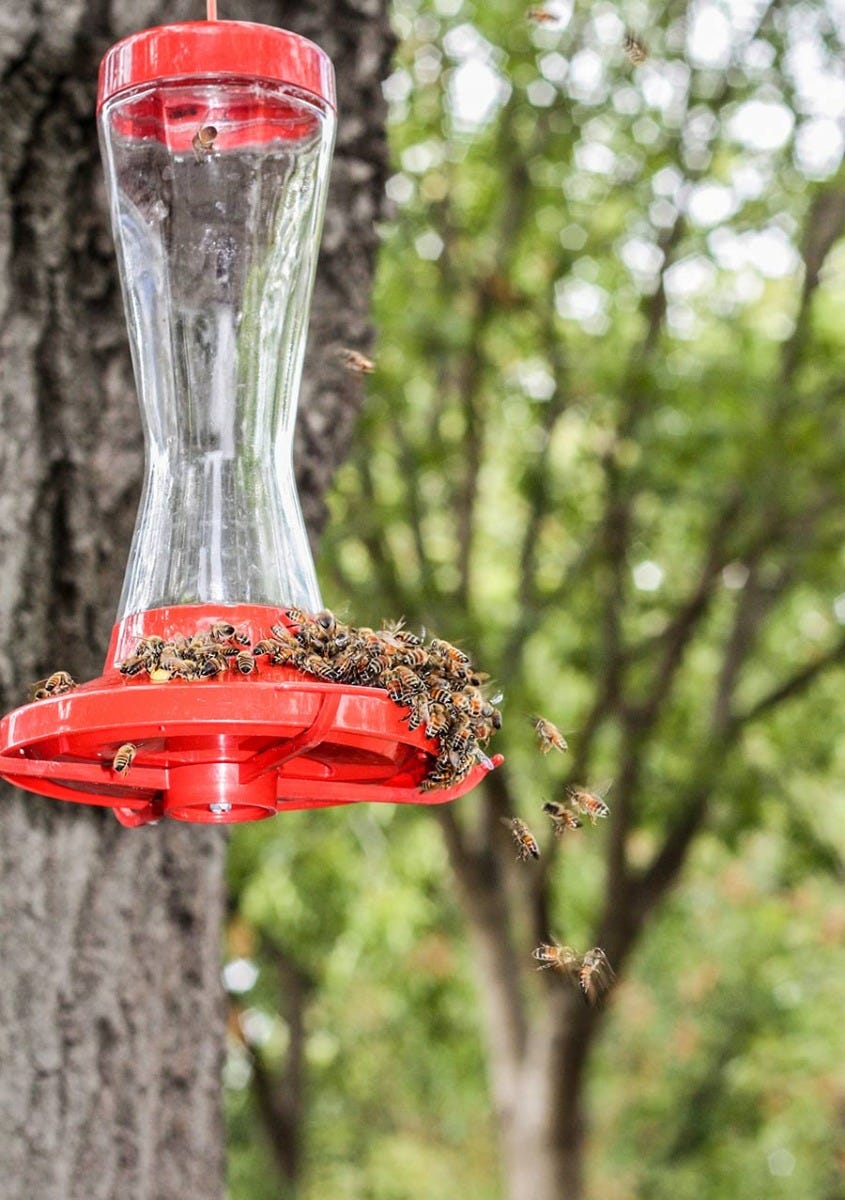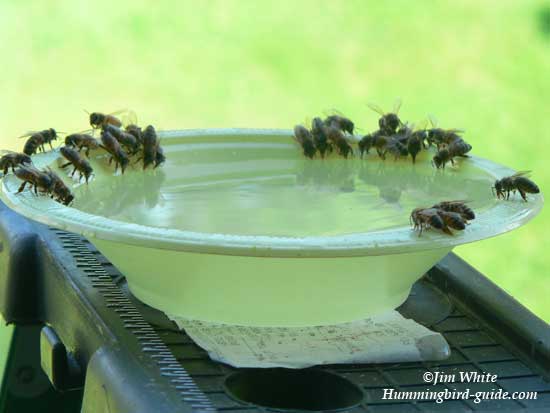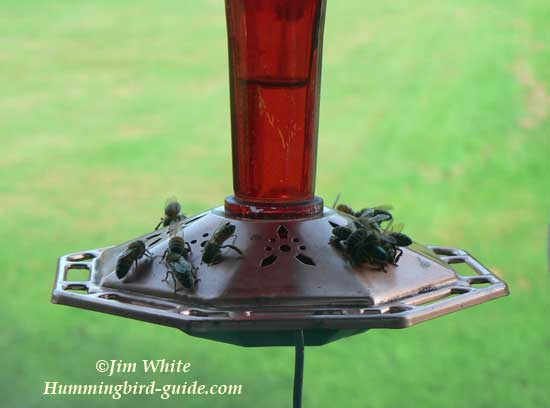Bees can pose a challenge for those who enjoy feeding hummingbirds. However, there are effective strategies to prevent bees from invading your hummingbird feeders. It is essential to choose the right type of feeder, ensure it is placed in the shade, and maintain cleanliness to deter bees. If bees have already discovered your feeder, it may be necessary to remove, clean, and adjust the sugar water ratio. Additionally, it is crucial to differentiate between bees and yellow jacket wasps, as they are often mistaken for each other at feeders. By following these tips, one can create a bee-free environment for hummingbirds to enjoy their nectar.
Choose the right kind of feeder
When it comes to attracting hummingbirds while keeping bees at bay, choosing the right kind of feeder is of utmost importance. One of the main factors to consider is the feeder’s ability to prevent leaks. Bees are naturally drawn to spilled nectar, so selecting a feeder that doesn’t leak will help mitigate their attraction. A saucer-type feeder is an excellent option as it typically has a shallow well for the nectar, reducing the likelihood of spills and leaks.
Place the feeder in the shade
To further discourage bees from invading your hummingbird feeder, it’s beneficial to strategically position it in a shaded area. Bees are less likely to be attracted to a feeder that is shielded from direct sunlight. By minimizing sunlight exposure, you can deter bees and create a more inviting environment for hummingbirds to enjoy their sugar water.

Keep the feeder clean
Regular cleaning of the hummingbird feeder is essential in preventing bee attraction. Bees are drawn to the scent of nectar and any remnants of spilled or stale sugar water. By maintaining a clean feeder, you can significantly reduce the likelihood of bees hovering around. It is recommended to clean the feeder thoroughly at least once a week, especially during warmer months when nectar can spoil more quickly. Additionally, make sure to promptly clean up any spills or leaks to discourage bee activity.
Use nectar guards
Installing nectar guards can be an effective solution to keep bees away from feeder ports. Nectar guards are small plastic or metal barriers that fit around the feeding holes of the feeder. Their purpose is to allow hummingbirds to access the nectar while preventing bees from entering. These guards create a physical barrier that only hummingbirds can penetrate, keeping bees at a distance and ensuring an uninterrupted feeding experience for the little birds.

Consider using a red feeder
The color of your feeder can play a significant role in attracting or deterring bees. Bees tend to be more attracted to yellow feeders, so opting for a red feeder may help deter their presence. Red is a color that hummingbirds are naturally drawn to, while bees are less inclined to be attracted to it. By choosing a red feeder, you can potentially minimize the bee activity around your hummingbird oasis.
Remove and clean the feeder
If bees have already discovered and taken over your hummingbird feeder, it is crucial to take prompt action. To reclaim your feeder, start by removing it from its current location. However, it’s essential to do this during a time when the bee activity is minimal, preferably at night or early in the morning. This will minimize the chance of encountering active bees and reduce the risk of stings.
Once the feeder is removed, thoroughly clean it to remove any traces of nectar that may be attracting the bees. Use a mild detergent and warm water to wash all parts of the feeder, paying particular attention to the feeding ports. Rinse the feeder thoroughly to ensure that no residue remains.
After cleaning the feeder, it is advisable to change the sugar water ratio. This change helps to reset the scent and taste of the nectar, making it less enticing to the bees. Typically, hummingbirds prefer a ratio of four parts water to one part sugar. However, adjusting this ratio temporarily by increasing the water content can help deter the bees. Remember to revert to the original ratio after the bee activity has subsided to ensure the hummingbirds receive their necessary nutrients.

Avoid using pesticides
While it may be tempting to use pesticides to eliminate bee presence around the hummingbird feeder, it is crucial to avoid doing so. Pesticides can be harmful to not only bees but also to hummingbirds and other beneficial insects. These chemicals pose a significant threat to the delicate ecological balance and can have negative repercussions on the overall health of the environment. Instead of resorting to harmful pesticides, focus on implementing natural strategies to deter bees.
Relocate the feeder
If bees persistently return to your hummingbird feeder, it may be necessary to relocate it. By moving the feeder to a different area of your yard or garden, you can disrupt the bees’ behavior and discourage them from returning. Find a spot that offers ample shade and minimal exposure to direct sunlight. The combination of a shaded area and a new location can help create an environment that is less desirable to bees while still providing a haven for hummingbirds.

Eliminate bee food sources
One effective way to reduce bee activity around your yard is to eliminate potential food sources. Bees are attracted to rotting vegetables and other decaying organic matter. By removing trash and ensuring your yard is free of rotting vegetables or fruits, you can significantly decrease the likelihood of bees frequenting your outdoor spaces. Keeping your yard clean and tidy will not only help deter bees but also contribute to a healthier and more inviting environment for both hummingbirds and humans.
Temporarily change the sugar ratio
In situations where immediate action is needed to deter bees from the hummingbird feeder, temporarily adjusting the sugar ratio of the nectar can be a helpful solution. By increasing the water content and reducing the sugar concentration, you create a less appealing nectar for bees. This adjustment should only be temporary and should be reverted to the original ratio once the bee activity has subsided. Ensuring an optimal sugar ratio is crucial for the hummingbirds’ health and energy needs.
Preventing bees from invading your hummingbird feeder requires a proactive approach and a combination of strategies. By selecting the right kind of feeder, placing it in a shaded area, and keeping it clean, you can create an environment that is less enticing to bees. Installing nectar guards, using a red feeder, and temporarily adjusting the sugar ratio are additional measures that can further deter bees. If bees have already discovered your feeder, removing and thoroughly cleaning it is essential. However, it is crucial to avoid the use of pesticides, as they can harm both hummingbirds and beneficial insects. Relocating the feeder and eliminating potential bee food sources also contribute to managing bee activity in your yard. By following these recommendations, you can create a welcoming haven for hummingbirds while minimizing bee disturbances.

Leave a Reply